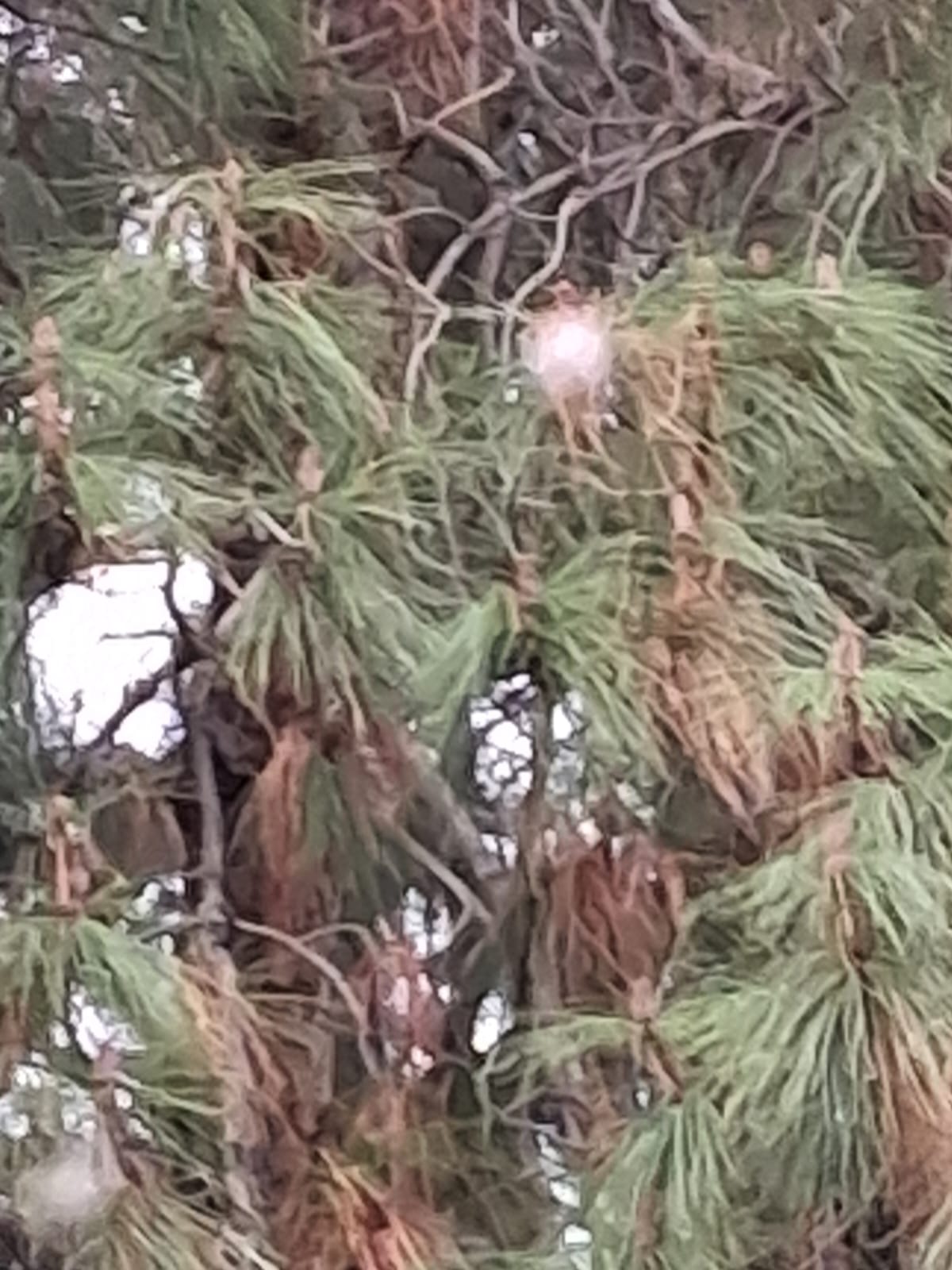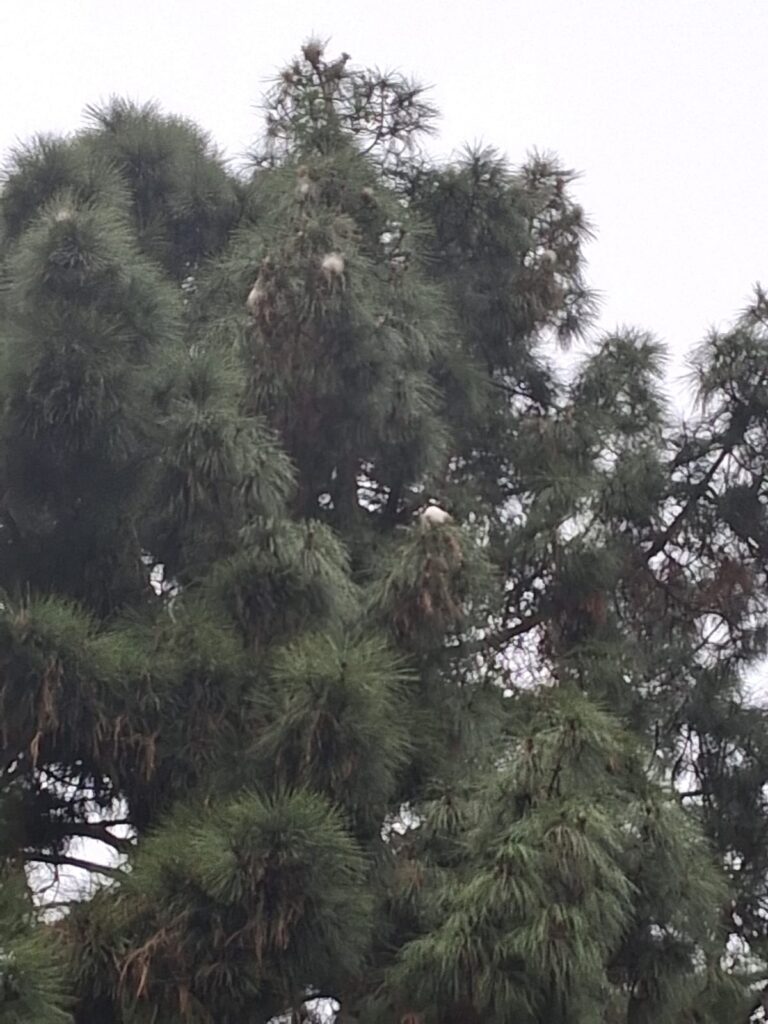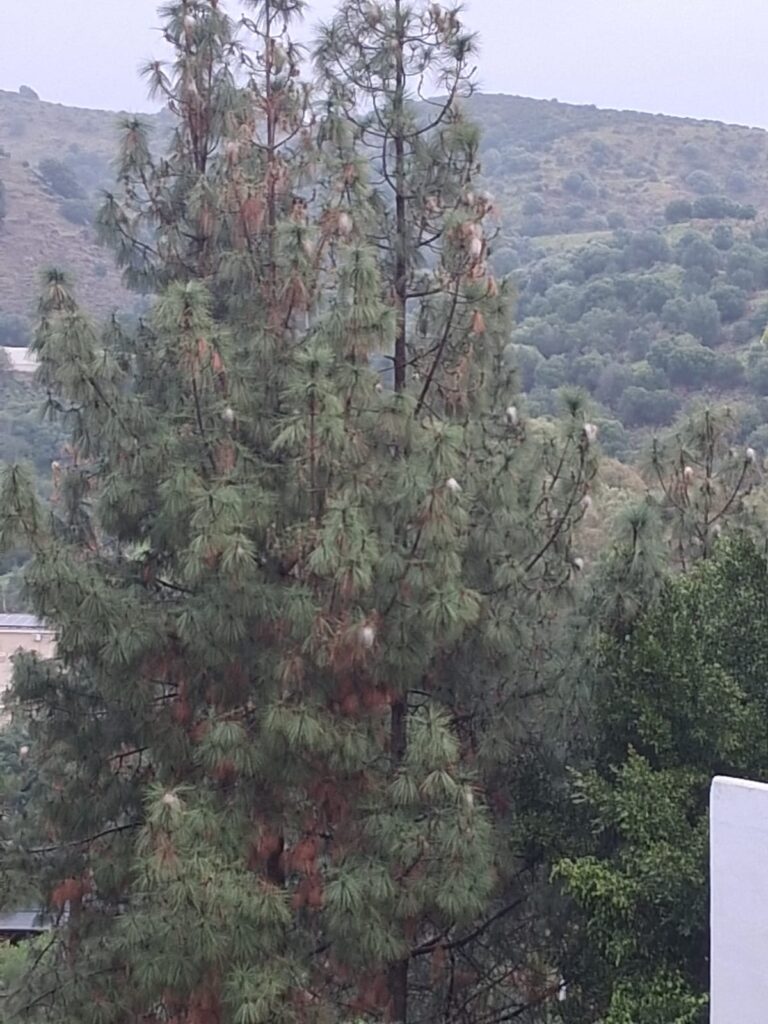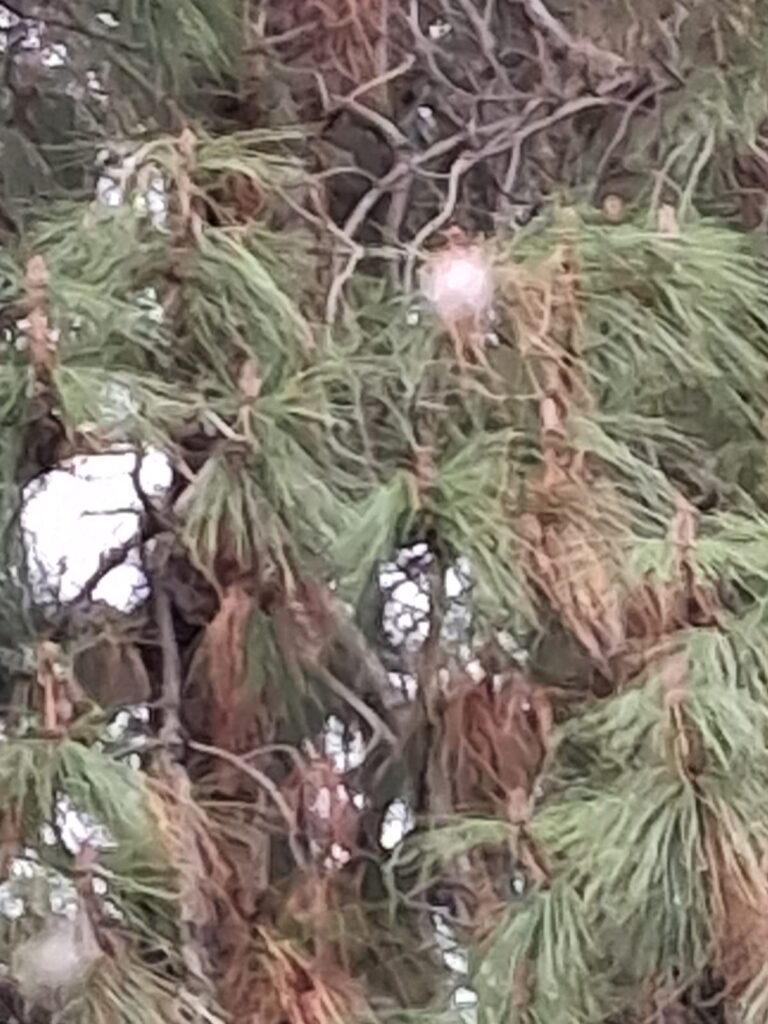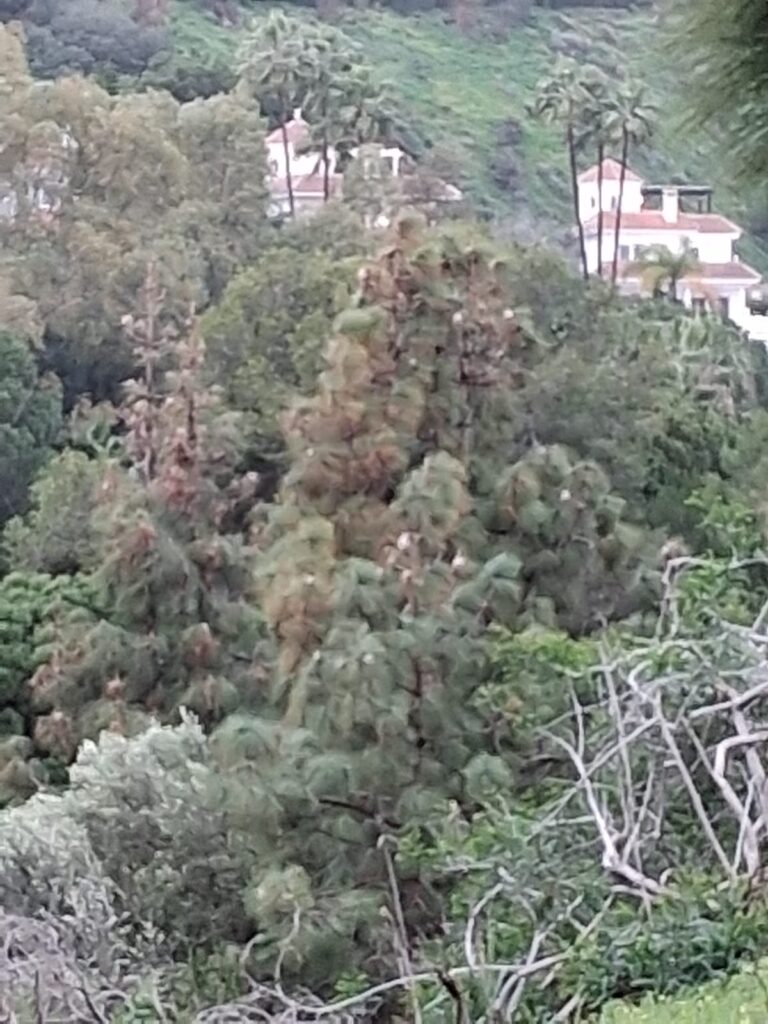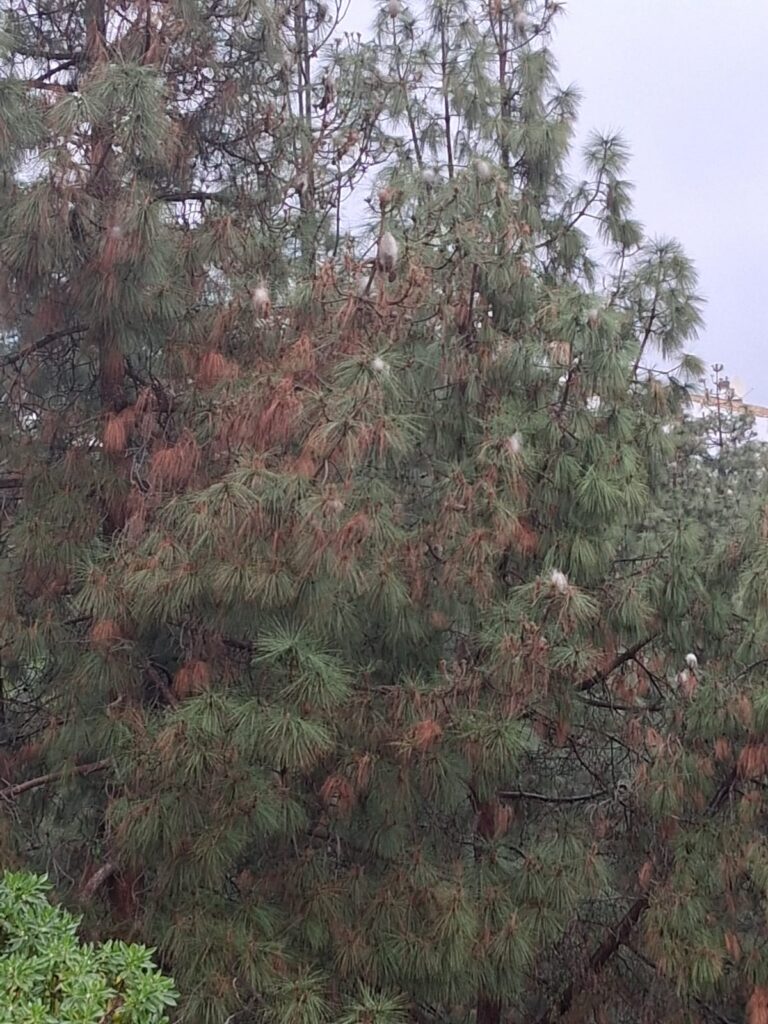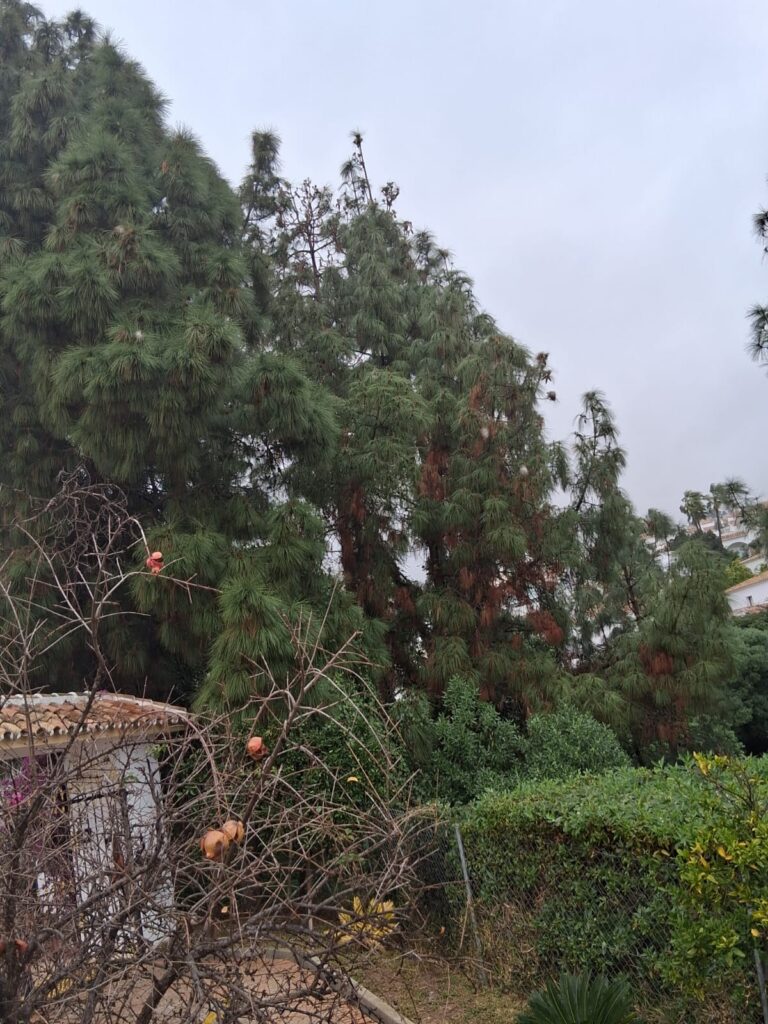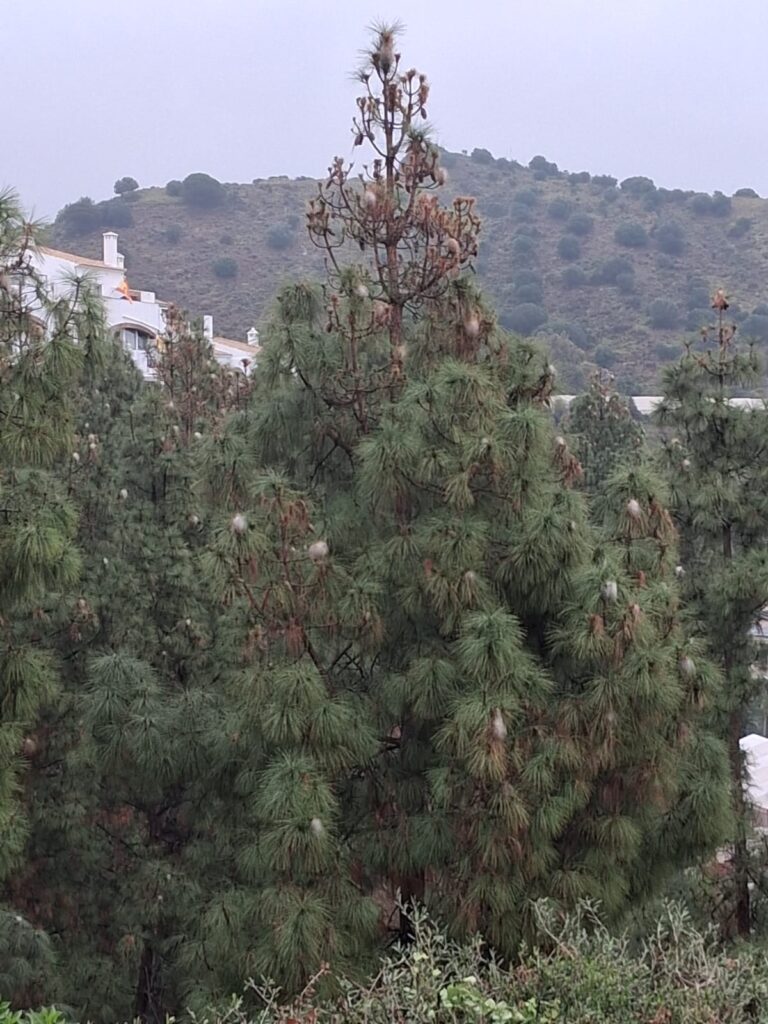The high temperatures have once again brought forward the processionary caterpillar season, which in the past used to occur between March and April with the arrival of spring. These caterpillars descend from pine trees and suppose a danger to pets.
While processionary caterpillars are harmful to all animals, dogs are particularly at risk. Their curiosity often leads them to sniff the caterpillars, which can be dangerous. If ingested, the toxins present in the caterpillars can cause severe damage, such as necrosis of the tongue or throat.
To prevent this, pine trees should be treated against processionary caterpillars in autumn. The EUC ensures that all its pines receive this treatment, as do many of our residents who have pine trees in their gardens. However, others neglect this responsibility due to lack of awareness or oversight. Treating plant and tree pests is an essential duty to prevent such problems, especially in the case of processionary caterpillars.
At this time, white nests can be seen on some pines. The caterpillars emerge from these nests and make their way to the ground, sometimes traveling significant distances. Standing beneath a tree infested with processionary caterpillars can cause skin irritation and other discomforts, and it can be particularly hazardous for people with allergies. As mentioned earlier, they also suppose a significant risk to pets.
Even though the caterpillars have already started emerging, pine trees should still be treated. The EUC is reaching out to residents with affected trees, urging them to take action as soon as possible.
We would like to thank those who have visited the office to report the presence and location of affected trees. Your cooperation is greatly appreciated.
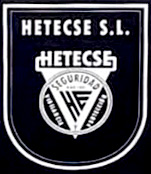 +34 695 223 964
+34 695 223 964

